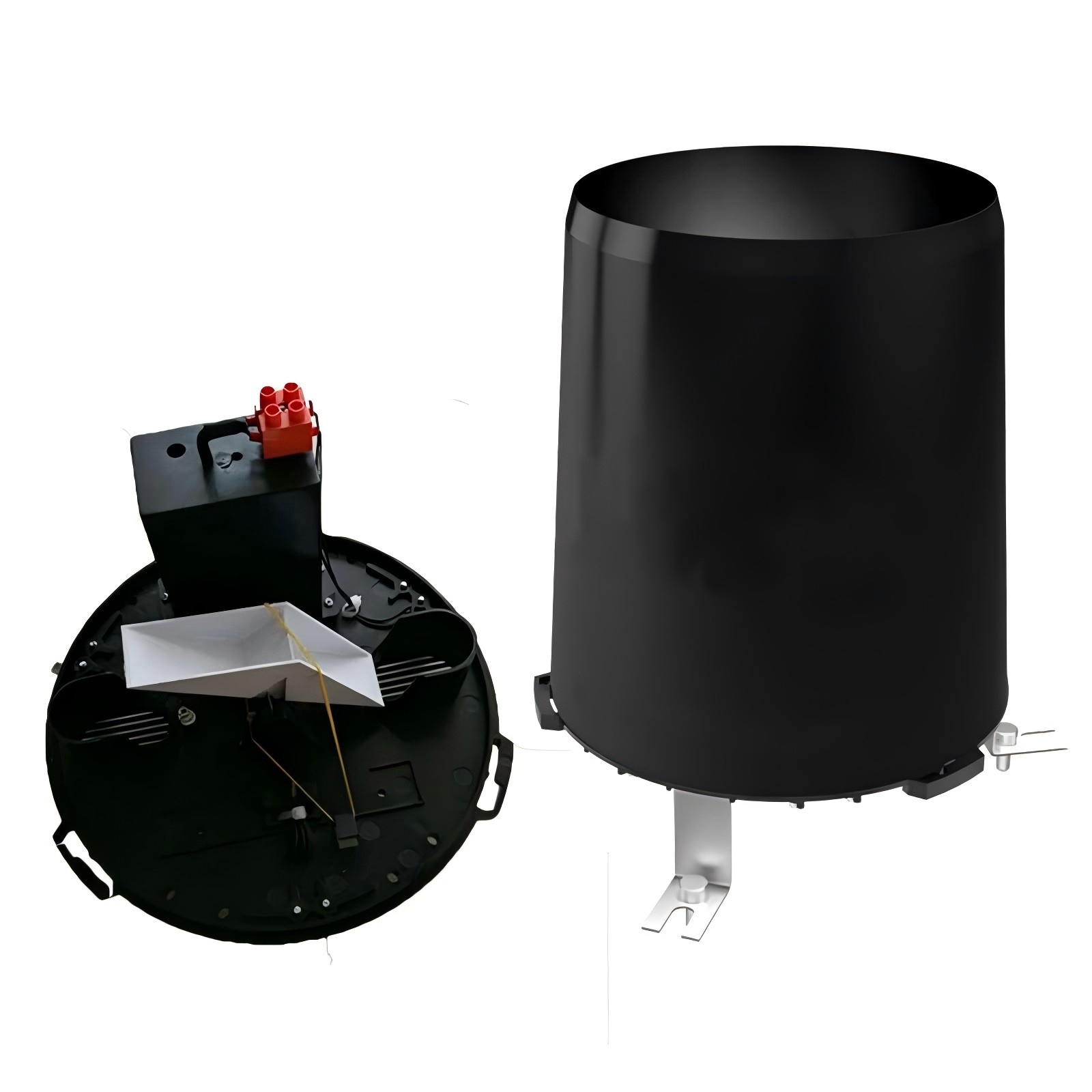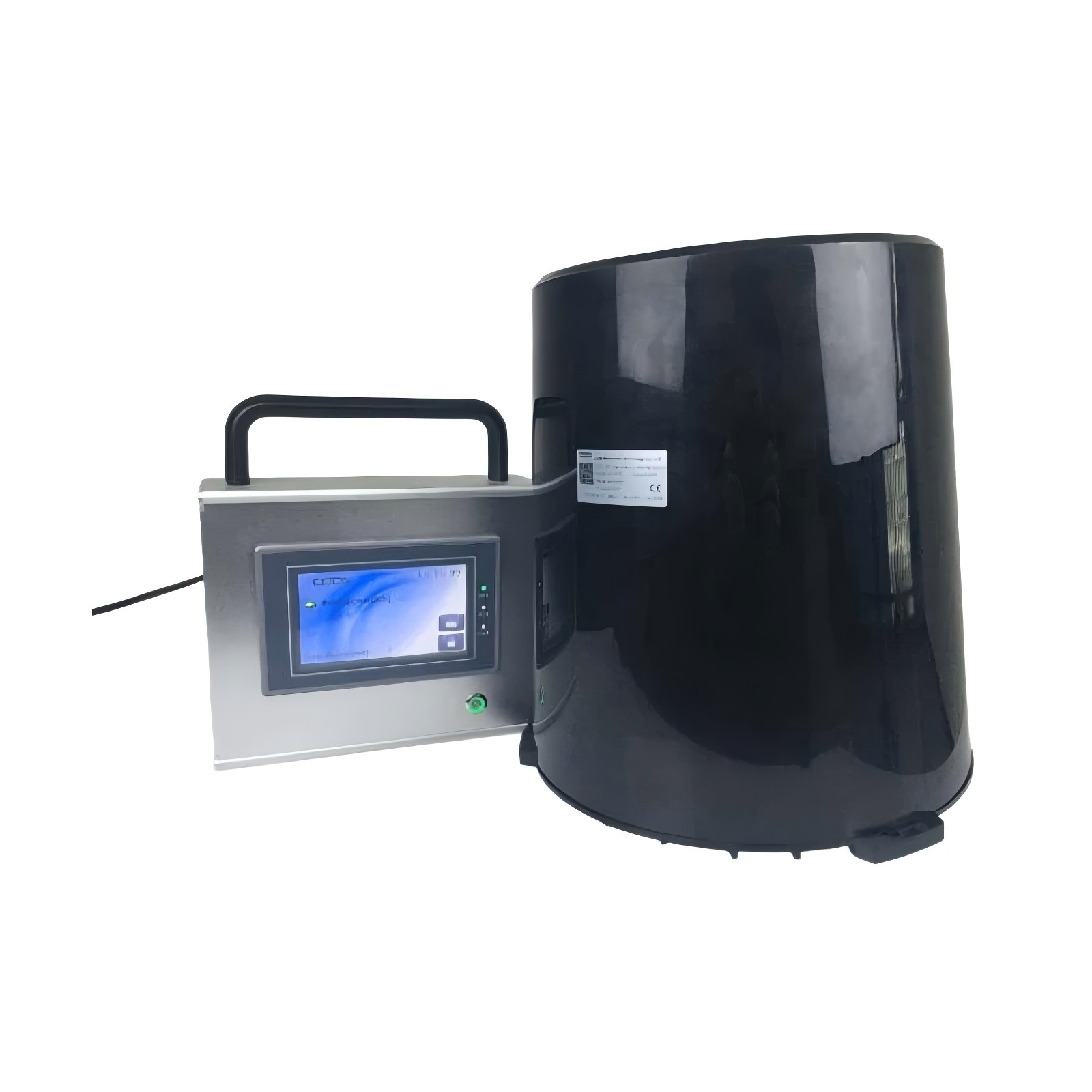Rainfall measurement is essential for many sectors, including agriculture, meteorology, and environmental monitoring. One of the most widely used instruments for measuring rainfall is the tipping bucket rain gauge. This device is known for being simple and efficient.
It gives accurate and real-time rainfall data. This makes it a valuable tool for weather monitoring and many other uses. In this article, we will look at how tipping bucket rain gauges work. We will also discuss their common uses in various industries.
A tipping bucket rain gauge measures how much rain falls in a certain place. The device consists of a small bucket mounted on a pivot. When rainwater fills the bucket, it collects until it gets heavy enough to tip over.
The tipping action starts a counter. This counter records each tip as a set amount of rainfall, usually in millimeters or inches.

The operation of a tipping bucket rain gauge is straightforward yet effective. Here's a step-by-step breakdown of how it works:
Water Collection: Rainwater falls into a small bucket (usually made of metal or plastic) positioned within the gauge.
Tipping Mechanism: As the bucket fills with rainwater, it eventually reaches a preset level (often 0.2mm of rainfall). At this point, the bucket tips over, emptying the water and triggering a mechanical or electronic counter.
Data Recording: Each time the bucket tips, the counter records the event as a fixed amount of rainfall. The tipping mechanism measures rainfall in small amounts. Each tip represents a certain volume of water.
Resetting: Once the bucket tips and empties, it returns to its initial position, ready to collect more rainwater. The process repeats for continuous rainfall measurement.
Tipping bucket rain gauges often have extra features. These can include a heated funnel to stop snow from collecting. They may also have a data logger to record and send rainfall data.
Tipping bucket rain gauges are widely used in various fields because of their accuracy, reliability, and ease of installation. Here are some of the primary applications:
Tipping bucket rain gauges are a standard tool in meteorological stations around the world. Researchers use them to measure rainfall patterns, monitor climate conditions, and collect data for weather forecasting.
These gauges provide real-time rainfall data, which is crucial for predicting storms, floods, and other weather phenomena. They are often part of larger weather stations. They connect to data networks to send information to central monitoring systems.
In agriculture, precise rainfall measurement is essential for optimizing irrigation and crop management. Tipping bucket rain gauges help farmers track rainfall. This helps them change irrigation schedules, save water, and grow better crops. By collecting accurate rainfall data, farmers can better anticipate water requirements, leading to more sustainable agricultural practices and resource conservation.
Rainfall data is critical for flood forecasting and management. People use tipping bucket rain gauges in flood-prone areas to monitor precipitation levels in real time.
Hydrologists collect data on rainfall intensity and volume. This helps them predict flood risks. They can then take steps to protect communities and infrastructure.
These gauges are often put in important spots along rivers, dams, and watersheds. They help track rain events that can raise water levels.
Tipping bucket rain gauges are important for environmental monitoring. They help us study ecosystems and natural resources. Researchers use these devices to measure rainfall in remote or protected areas, contributing valuable data on environmental conditions.
The information collected helps scientists watch the health of ecosystems. It also tracks climate change effects. Additionally, it assesses how precipitation impacts biodiversity and natural habitats.
In urban areas, accurate rainfall measurement is necessary for planning drainage systems, managing stormwater, and preventing flooding. Tipping bucket rain gauges give real-time data. This data helps engineers create better drainage systems and flood control measures.
The data helps us understand how well stormwater systems work. It also shows areas that are at high risk of flooding. This information allows for better urban planning and infrastructure development.
Tipping bucket rain gauges are also commonly used in research and educational settings. Researchers can collect real-time rainfall data.
This helps them study how precipitation affects different environmental factors. These factors include soil moisture, plant growth, and water quality. Educational institutions use these gauges to teach students about meteorology, hydrology, and environmental science, providing hands-on learning experiences.
Tipping bucket rain gauges offer several benefits, making them a popular choice for rainfall measurement in various applications:
Accuracy:
These gauges give accurate, real-time data on rainfall amounts. This makes them reliable for short-term and long-term monitoring.
Ease of Use: Tipping bucket rain gauges are simple to install and maintain, with minimal technical expertise required. Their compact design allows them to be deployed in a wide range of environments.
Cost-Effective:
Tipping bucket rain gauges are cheaper than other rain measurement devices. This makes them a good choice for both small and large uses.
Data Integration:
Many tipping bucket rain gauges have data loggers or transmitters. This lets data be collected, stored, and analyzed from a distance. This makes them ideal for integration into larger weather or environmental monitoring systems.
Durability:
These gauges are made to handle tough weather. They are good for outdoor use in many climates, including extreme heat and heavy rain.

While tipping bucket rain gauges are highly effective, they do have some limitations:
Underestimation of Heavy Rainfall:
During heavy rain, the bucket may tip too fast to catch all the rain. This can lead to a small underestimation of rainfall.
Maintenance Requirements:
The mechanical parts of tipping bucket rain gauges need regular maintenance. This helps ensure they work accurately, especially in places with heavy rain or extreme weather.
Susceptibility to Wind and Debris:
Strong winds or flying debris can interfere with the tipping mechanism, affecting the accuracy of the readings. Additional protection may be required in certain environments.
Tipping bucket rain gauges are reliable and accurate tools. They are also cost-effective for measuring rainfall in many situations.
These gauges are important for many areas. They help with weather monitoring, farming, flood management, and city planning. They collect real-time data on rainfall.
They have some limits, but their benefits make them very useful in many areas. They are easy to use, durable, and work well with larger monitoring systems. As climate change affects rainfall patterns, accurate and timely rainfall data will become more important. Tipping bucket rain gauges will be essential tools for future environmental monitoring and management.
Discover how real-time weather station data impr
Discover how Automatic Weather Stations (AWS) ar
Discover how CODA gas sensors are the invisible
Contact: Molly
Phone: +86-17775769236
Tel: 86-0731-85117089
Email: molly@codasensor.com
Add: Building S5, Aux Square, Yuelu District, Changsha City, Hunan Province, China
We chat